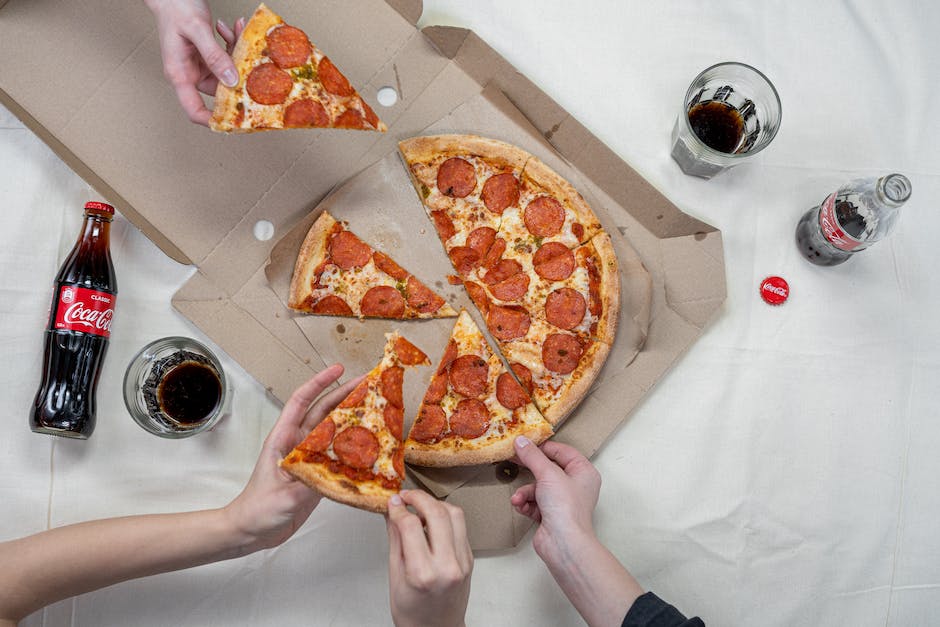When we talk about eating behaviors, what kind of food you are using to fulfill your hunger pangs is important. You can be engaging in activity-eating, emotional eating, or just plain starving yourself. All of these types of eating are not okay!
Activity-eaters will eat while you’re watching TV, listening to music, or doing something else. The thing is, this type of eater doesn’t feel hungry so they don’t really need to eat much. They may even be unaware that they’re eating because it’s happening outside of normal time frames.
Emotional eaters will use food as a way to deal with their emotions. This could be due to an unexpected situation, stress, disappointment, or anger.
Starving yourself is another example of emotional eating. You empty your stomach of everything except for some water and then hope you feel full later when you take a break from eating.
This article will discuss all three of these types of eating and how to improve them if you find that they influence your body weight.
Food addiction

There is a tendency to refer to eating behaviors as addictions, but this term has been criticized for being misleading. The word “addiction” suggests that you will feel sick or bad when you don’t eat enough of something and that if you do start eating what he/she eats, then you should be able to have as much of it as they can!
Addictive foods are usually very unhealthier than average – they may even contain additives like sugar, salt, or fat. Although there is some truth to this assertion (think about it- chocolate tastes good and we all know too well how much sugar most sodas contain!), using the term “food addiction” could create false perceptions in people who try to restrict their diets due to worries about becoming obese.
Instead of calling these habits food addictions, researchers now prefer to use the term food habit to describe them because it does not imply an illness. A food habit is simply having excessive amounts of food that you eat regularly.
A person with a healthy diet doesn’t need to worry about becoming overweight or obesity, so using the term addiction is confusingly negative. It also sets unrealistic expectations; thinking that by trying to maintain a healthier weight, you would automatically stop from craving unhealthy snacks and meals.
This article will talk more about why it is important to identify your eating patterns and see what type of behavior you have.
Compulsive eating

When you describe someone as having compulsive eating, they may be characterized by three things: frequent eating, excessive amounts of food, and feeling hungry much of the time.
Other symptoms include mood changes related to hunger or lack thereof, stress-related overeating, and activity avoidance due to fear of being hungry.
When these behaviors are repeated and persistent, it can lead to health problems. Overweight and obesity are some of the most serious consequences of chronic overnutrition.
Furthermore, when people with binge eating disorder try to restrict their diets, this often has the opposite effect and results in an episode of binging. This can continue for long periods of time until the individual gives up and eats whatever he or she wants.
There is no clear cause for binge eating beyond biological factors, but research does suggest that genetics play a significant role. It is also thought to be triggered by hormonal shifts, such as during adolescence or menopause.
Sloth eating

When someone is accused of sloth eating, it typically involves them spending lots of time eating and putting little effort into preparing the food they are consuming.
A person may also spend large amounts of time talking while they eat, which seems to contradict their lack of action in the eating process.
When you add up all these factors, it becomes very clear that what we refer to as “sloth” eating isn’t actually lazy eating at all.
It’s just normal eating with less efficiency. A person might be hungry when they wake up, so they sleep through lunch or breakfast, and then grab something quick and easy before going back to work.
This can sometimes turn into an endless hunger cycle because there’s not much else you can do during the day except wait for meal times. It’s also hard to keep track of how many calories you have consumed, making it easier to stop eating and start denying your body its needed nutrition.
Keto dieting

Ketogenic diets are characterized by high levels of fats that have been incorporated into your diet. This includes eating lots of nuts, oils, dried fruits, and meats. You also may be given prescriptions for keto supplements or nutritional drops that contain higher amounts of fat to help you re-enter a normal state of ketosis.
Ketogenic foods can include butter, cream, olive oil, coconut milk, bacon grease, fermented vegetables like kimchi, and meat such as pork, lamb, chicken, fish, and turkey. Some people even eat pure MCTs (fat molecules that come from coconut oil).
Because they are rich in omega-ketones, which are similar to those found in ketone bodies, ketogenic diets can promote weight loss. However, just like any other diet, there is no guarantee of success if not done under strict rules.
There are some similarities between ketogenic diets and low carbohydrate diets because both reduce glucose absorption, but ketogenic diets go one step further and actually increase ketone body production.
The 5-Factor Model

The first model to emerge in the eating psychology field is the 5-factor model. This model was built upon several theories, including that proposed by Goldstein (2008) which categorized people into one of five types when it comes to hunger and fullness.
This theory proposes that there are different types of hungry individuals and also different type faces for food. Some people are ravenous eaters who can easily satisfy their appetite, and thus have less desire for food, while others need more time to feel satiated and so they may overindulge at meal times.
There are two types of emotional eater’s – those who use food to cope with negative feelings and those who use food to gain positive emotions. People who use food to avoid or reduce anxiety may find that their eating habits become problematic later.
People who place importance on appearance may spend too much time thinking about how they look when they eat, making them worry about whether their looks match what “good” eating looks like.
The tristate model

The term “binge eating” typically refers to behaviors that occur in at least three of the following stages: pre-rut, rut, and post-rut. During the pre-rut stage, people who binge eat are not hungry or craving food, but they feel stressed or anxious, which makes them want to consume foods to calm down.
The rut stage is when individuals begin to feel hungry and crave foods, and this can be accompanied by feelings of stress. At this time, some people may start to feel tired as their body uses up more calories to satisfy its hunger.
During the post-rut stage, people have balanced sleep/wake cycles and normal moods and emotions. They also may experience weight loss because they’re consuming fewer calories than they were before the dieting phase of binge eating.
The YOLO model

The term “YOLO” was coined in 2008, when You Only Live Once. Since then, it has gone viral and is now used to describe any behavior or attitude that doesn’t seem like your normal self-style.
The most common examples people give for a YOLO style are going after what you want with gusto, saying goodbye to traditions, and having lots of fun. All three of those things can be motivating, but there is a dark side to this type of lifestyle.
When you have a lot happening, it can make it difficult to focus on the present moment. It also sets a tone of not investing too much energy into anything because you don’t know if you will see this life pattern again.
Traditions help us establish strong relationships that rely on consistency and understanding. Having less time in between engagements helps keep friendships fresh and vibrant.


